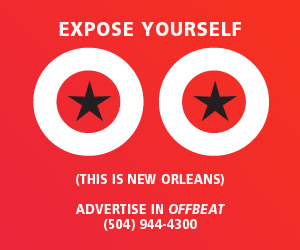Dr. John is an essential piece of New Orleans for his R&B and rock ’n’ roll sessions at Cosimo Matassa’s studio, for the marvelous invention of his Gris-Gris music and stage show, for his revival of his R&B idols on Gumbo and for his role in spreading the New Orleans funk worldwide with In the Right Place and Desitively Bonaroo. Perhaps it’s easy to forget that his deepest roots were in the ballads and pieces from the American Songbook that he heard around the house when he was very young. These are the songs that influenced one of the most dramatic identity switches of his career when he rotated out of the funk long enough to make In a Sentimental Mood, with its Grammy-winning version of “Makin’ Whoopie,” a duet with Rickie Lee Jones.
Mac remembered that one of his mother Dorothy’s favorite songs when he was a kid was “My Buddy.” Once upon a time she used to sing it to him. His aunts and uncles would gather around the piano and play popular tunes that stuck in the young Mac’s budding musical imagination. In fact Rebennack’s first recording session was not at Cosimo’s, but in an old make-your-own-record kiosk cut one summer in an arcade by Lake Pontchartrain. What was on his mind back then? He recorded himself singing “Blueberry Hill,” “Old Time Religion” and “Long Ago and Far Away.”
Rebennack was a brilliant producer and songwriter in his early days, but not much of a singer. This was probably one of the reasons he resisted being a front man until circumstance gave him no choice. But singing was in his blood, and his love for classic songs never waned. His voice was not the usual instrument used on such material— it was craggy, without much range and a tendency to go off pitch. But he could sing the pants off of any song he came close to, with an understanding of phrasing, improvisation and rhythm flow second to none.
It’s always a treat to hear Dr. John sing these songs, so it comes as an unexpected pleasure to hear this 1995 session with the WDR Big Band. Mac’s love for the old stuff is matched by this classy outfit with its rich arrangements and cushioning version of swing. Highlights here are “I’m Just a Lucky So and So,” “Blue Skies,” “Gee Baby Ain’t I Good to You,” “New York City Blues,” “I Still Think About You” and “I’m Confessin’ (That I Love You).” Mac often sings with a sly smile and a bit of a swagger, but on this material he reveals his tender heart, a longing for love and a striking vulnerability. His quietly dramatic reading of “Tell Me You Will Wait for Me” is a performance for the ages. —JOHN SWENSON
This is the first release from the Dr. John archives since the man’s passing, and it’s a bit of a curio—capturing a studio session (and probable concert rehearsal) with a Cologne big band, during a tour stop in Germany in 1995. He was then promoting Afterglow, his second album of jazz/pop standards, from which comes most of this
material.
So this is largely a not-too-different alternate take on that album, plus a few standbys from his live repertoire, on which the big band lays out: “Mess Around” uses only the rhythm section; “Tipitina” and “Stagger Lee” are solo performances. For Dr. John this was an era of rejuvenation, and Duke Ellington’s “I’m Just a Lucky So and So” remains one of his warmest and winningest vocal performances, both here and on Afterglow. Also reprised here are “I Still Think About You” and “There Must Be a Better World Somewhere,” a pair of sturdy blues songs he co-wrote with Doc Pomus (the latter for B.B. King, who made it a major late-career statement). Only two tracks are substantial reworks of signature material: “Goin’ Back To New Orleans”—as always an occasion for stretching out—and especially “My Indian Red.” The sound of the latter recalls Billy May’s swingingest arrangements for Sinatra, and it’s where the big- band voodoo really happens.
Big-band jazz was one of the many directions Dr. John was pondering at the time—as it turned out he ultimately formed a funky and flexible four-piece band, the Lower 9-11, who joined him for the next couple of decades. This proved to be the right decision and led to a couple of his greatest albums, but this is an enjoyable snapshot of the moment. And so much the better if it leads to a lot more archival releases—especially if anyone’s got that ultimate Holy Grail, a well-recorded show from the Night Tripper years. —BRETT MILANO




